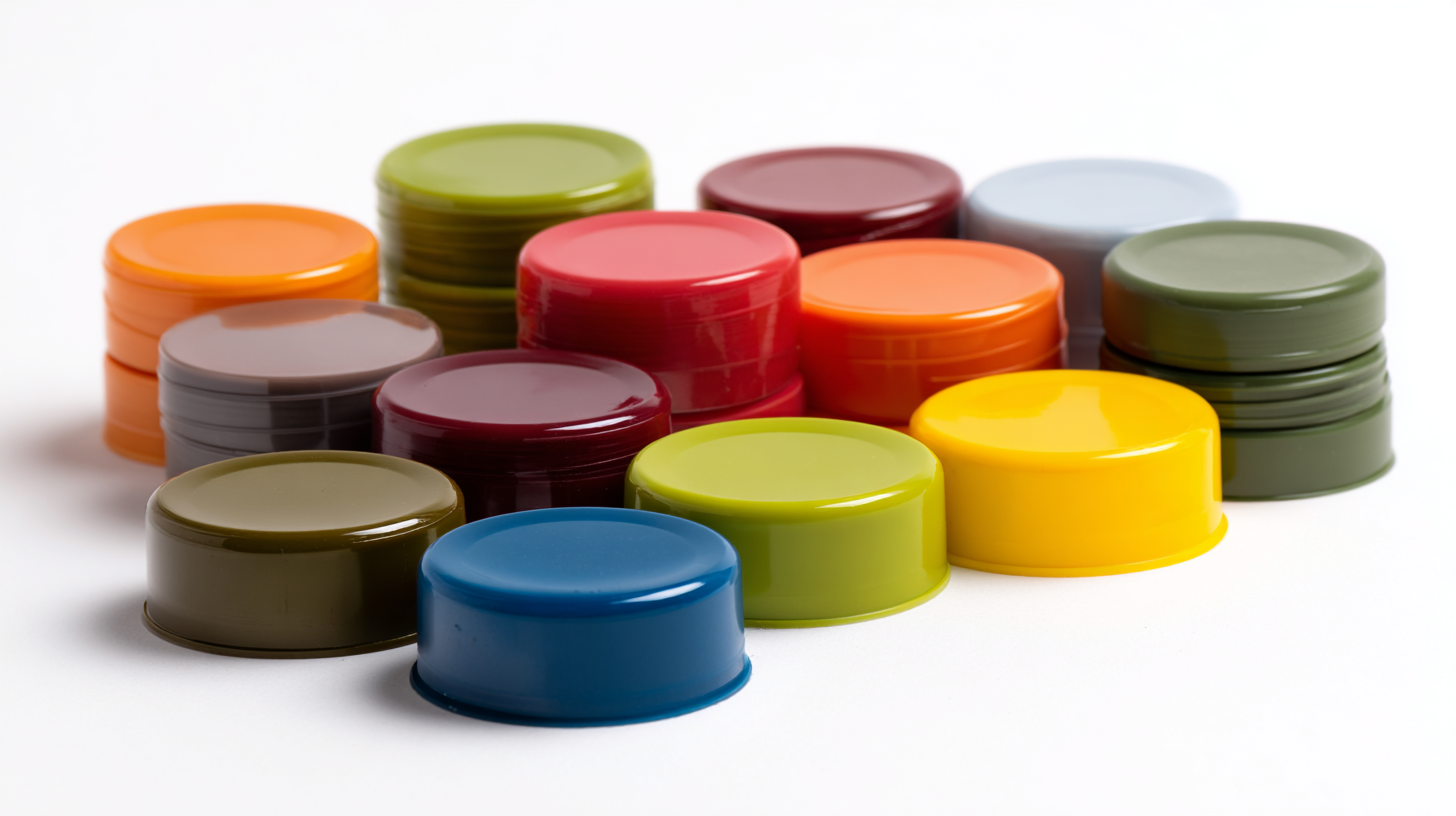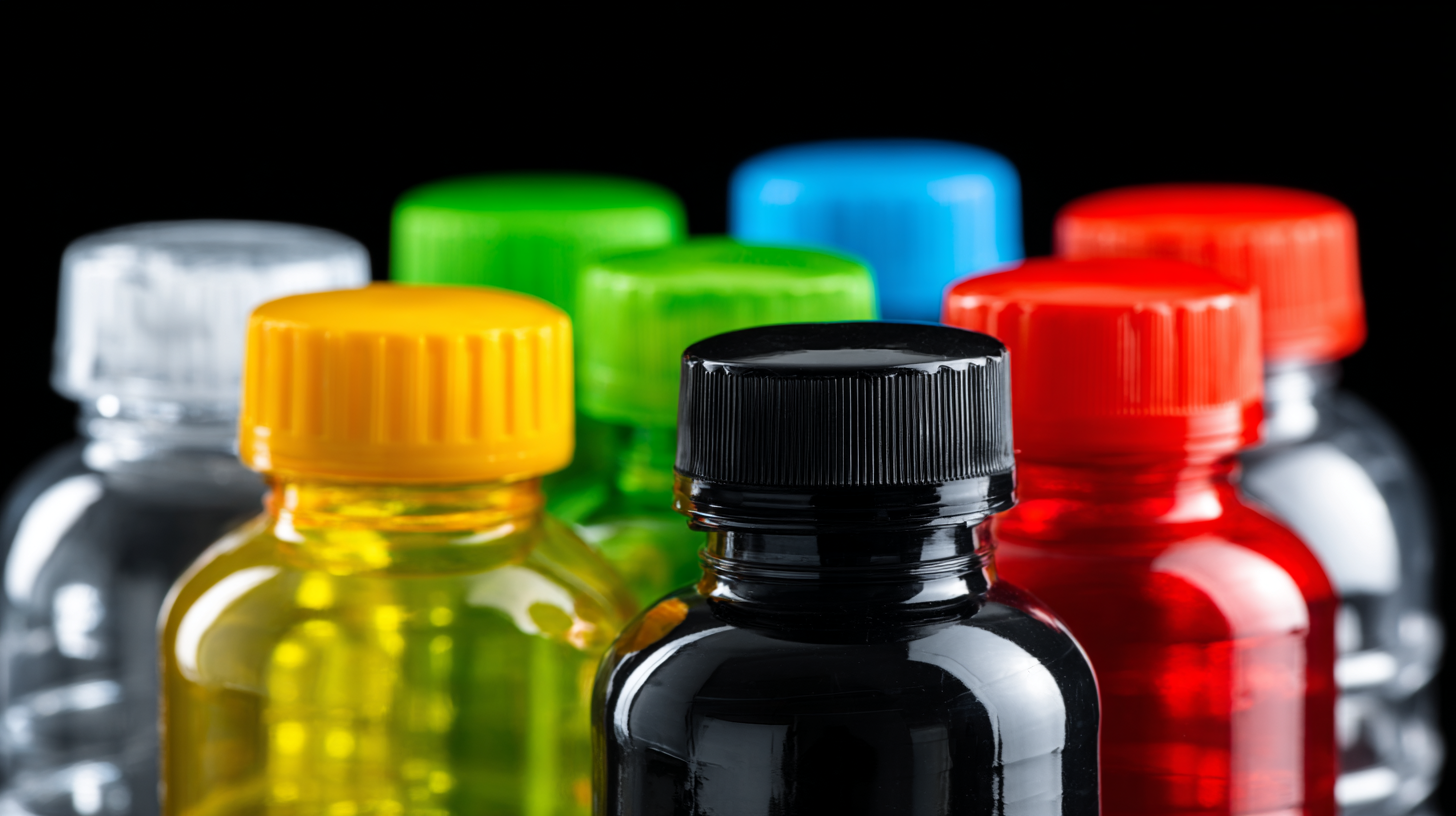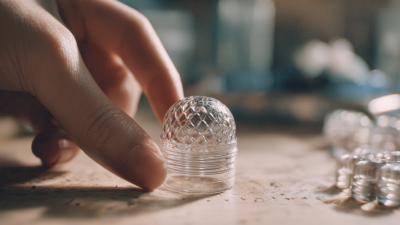Top 10 Benefits of Using Plastic Caps for Packaging and Their Market Growth Insights
In the ever-evolving world of packaging, plastic caps have emerged as a crucial component, offering numerous benefits that can significantly enhance product integrity and consumer satisfaction. According to industry expert Dr. Emily Harrison, a leading figure in sustainable packaging solutions, “The versatility and reliability of plastic caps make them indispensable in modern packaging, balancing functionality with eco-friendliness.” As companies seek to adapt to market demands and improve their competitive edge, understanding the advantages of using plastic caps is essential.

From cost-effectiveness to superior sealing capabilities, plastic caps offer a myriad of benefits that not only enhance packaging efficiency but also contribute to brand perception. The growth of the plastic cap market underscores the increasing recognition of these advantages among manufacturers and consumers alike. Recent trends highlight a growing emphasis on sustainability, as companies strive to meet environmental standards while still providing high-quality packaging solutions. This introduction paves the way to explore the top ten benefits of plastic caps for packaging, as well as insights into the market growth that positions them at the forefront of the packaging industry.
Top Trends in Plastic Cap Design and Innovation for 2025
 In 2025, the landscape of plastic cap design and innovation is poised for significant transformation, driven by emerging trends that focus on sustainability and functionality. One notable trend is the rise of tethered caps, which are becoming increasingly mandated in various regions, particularly Europe. These caps not only mitigate litter issues but also enhance the recycling process by keeping caps attached to their bottles. As legislation tightens around environmental practices, the integration of tethered caps into packaging solutions represents a commitment to reducing waste and promoting a
circular economy.
In 2025, the landscape of plastic cap design and innovation is poised for significant transformation, driven by emerging trends that focus on sustainability and functionality. One notable trend is the rise of tethered caps, which are becoming increasingly mandated in various regions, particularly Europe. These caps not only mitigate litter issues but also enhance the recycling process by keeping caps attached to their bottles. As legislation tightens around environmental practices, the integration of tethered caps into packaging solutions represents a commitment to reducing waste and promoting a
circular economy.
Another key trend is the shift toward more aesthetic and user-friendly packaging designs. With consumers becoming more environmentally conscious, brands are exploring retro aesthetics and refillable solutions that resonate with sustainability. This focus on style, function, and brand storytelling is not just about visual appeal, but also addresses the practical needs of consumers looking for convenient and eco-friendly packaging options. As the beverage packaging market continues to evolve, such innovations are expected to play a crucial role in meeting the growing demand for responsible and engaging packaging solutions.
Key Advantages of Plastic Caps in Food and Beverage Packaging
Plastic caps play a crucial role in food and beverage packaging, offering numerous advantages that drive their increasing popularity in the market. One of the key benefits is their ability to enhance product safety and shelf life. By providing an airtight seal, plastic caps prevent contamination and preserve freshness, which is essential for perishable goods. Additionally, they contribute to waste reduction as many designs incorporate features that facilitate recycling, thus addressing growing environmental concerns.
The market for tethered caps, in particular, is experiencing significant growth, driven by legislative changes and sustainability initiatives. With the global tethered caps market projected to expand from $33.36 billion in 2025 to $52.10 billion by 2032, the industry is adapting quickly to consumer demands for eco-friendly solutions. However, despite their environmental benefits, tethered caps have faced criticism from consumers, who often find them inconvenient during use. Balancing usability with sustainability remains a challenge for manufacturers as they innovate to meet both market demands and regulatory standards.
Market Analysis: Growth Projections for Plastic Caps by 2025
The plastic caps market is poised for significant growth, with projections indicating a rise driven by increasing demand across various industries, including food and beverages, pharmaceuticals, and personal care products. According to a recent industry report by Fortune Business Insights, the global plastic caps market is expected to reach approximately $40 billion by 2025, growing at a CAGR of around 5.2% from 2020. This growth is attributed to the expanding e-commerce sector and rising consumer preference for convenience packaging solutions.

Moreover, sustainability trends are influencing the market dynamics, as manufacturers intensify efforts to develop eco-friendly alternatives. The demand for lightweight and durable plastic caps is surging, primarily due to their role in enhancing product shelf life and preventing contamination. Notably, the rigid plastic cap segment is anticipated to dominate the market, holding a substantial share thanks to its effectiveness in preserving the quality of liquid products. As companies invest in innovative designs that cater to both functionality and environmental concerns, we can expect the plastic caps market to continue flourishing in the coming years.
Sustainability Considerations: Biodegradable Options in Plastic Caps
The market for plastic caps is poised for significant growth, particularly with the increasing emphasis on sustainability. A recent report indicates that the global tethered caps market is projected to expand from $33.36 billion in 2025 to $52.10 billion by 2032, reflecting a compound annual growth rate (CAGR) of 6.58%. This growth is not only driven by the demand for more efficient packaging solutions but also fueled by a shift towards eco-friendly alternatives in packaging materials.
Incorporating biodegradable options in plastic caps can address pressing sustainability considerations. As plastic pollution continues to pose a threat to the environment, many industries are exploring innovative materials, such as bioplastics derived from organic sources. In addition, experts suggest alternatives like seaweed packaging, which are gaining traction for their reduced environmental impact. Notably, companies transitioning from single-use plastics to biodegradable materials are gaining recognition, highlighting the importance of such innovations in reducing landfill waste. This growing awareness among consumers can further incentivize manufacturers to invest in sustainable practices, paving the way for a greener future in packaging.
Top 10 Benefits of Using Plastic Caps for Packaging and Their Market Growth Insights - Sustainability Considerations: Biodegradable Options in Plastic Caps
| Benefit | Description | Market Growth Rate (%) | Sustainability Considerations | Biodegradable Options Availability |
|---|---|---|---|---|
| Cost-Effective | Plastic caps are cheaper to produce and replace compared to other materials. | 5.2 | Recyclable and reusable options available. | Limited biodegradable options. |
| Durability | Plastic caps are resistant to breakage and corrosion. | 4.8 | Material innovations focus on reusable designs. | Emerging biodegradable alternatives being tested. |
| Lightweight | Facilitates lower shipping costs and easier handling. | 6.0 | Lightweight options reduce carbon footprint. | Some biodegradable caps are being developed. |
| Variety of Designs | Customizable in shape, size, and colors to fit brand needs. | 4.5 | Options for trendy designs using eco-friendly materials. | Limited availability. |
| Tamper Resistance | Provides assurance to customers that their products are safe. | 5.5 | Innovations in tamper-evident biodegradable designs are underway. | Some options available. |
| Sealing Performance | Ensures that products remain fresh and secure. | 5.1 | Biodegradable plastics are being researched to match sealing capabilities. | Research ongoing for effective solutions. |
| Chemical Resistance | Suitable for a wide range of products without degrading. | 4.9 | Sustainable chemicals for production of caps. | Limited options currently. |
| Global Demand | High demand across various industries boosts production. | 6.3 | Increased interest in sustainable packaging solutions. | Growing interest in biodegradable solutions. |
| Easy to Assemble | Simplifies the packaging process for manufacturers. | 5.6 | Focus on minimizing waste in the assembly process. | Research into biodegradable assembly options. |
Comparative Cost Efficiency of Plastic Caps over Alternative Packaging Solutions
The comparative cost efficiency of plastic caps over alternative packaging solutions has become a pivotal consideration for manufacturers and consumers alike. Plastic caps are not only lightweight but also designed for easy application and removal, which significantly reduces labor costs during production and packaging processes. The simplicity of their design allows for high-speed automation in bottling and capping lines, further enhancing operational efficiency and contributing to lower overall costs.
Moreover, the durability of plastic caps ensures a longer shelf life for products, minimizing wastage due to spoilage or contamination. Unlike metal or glass alternatives, which can be more expensive to produce and transport, plastic caps offer a more budget-friendly option without compromising on quality. As businesses continue to seek ways to reduce expenses while maintaining high standards, the demand for cost-effective packaging solutions like plastic caps is expected to grow, reflecting a shift towards materials that combine affordability with functionality.
Related Posts
-

Unlocking Efficiency: The Advantages of Utilizing Plastic Caps in Packaging Solutions
-

Exploring Innovative Uses for Plastic Caps: From DIY Crafts to Sustainable Solutions
-

Injection Moulding Process Challenges That Every Global Buyer Should Know
-

Unveiling the Advantages of Polypropylene Plastic: A Game Changer for Modern Manufacturing
-

Ultimate Guide to Sourcing PVC Sheets for Your Global Supply Chain Success
-

Innovative Injection Moulding Process Examples That Drive Global Procurement Efficiency
